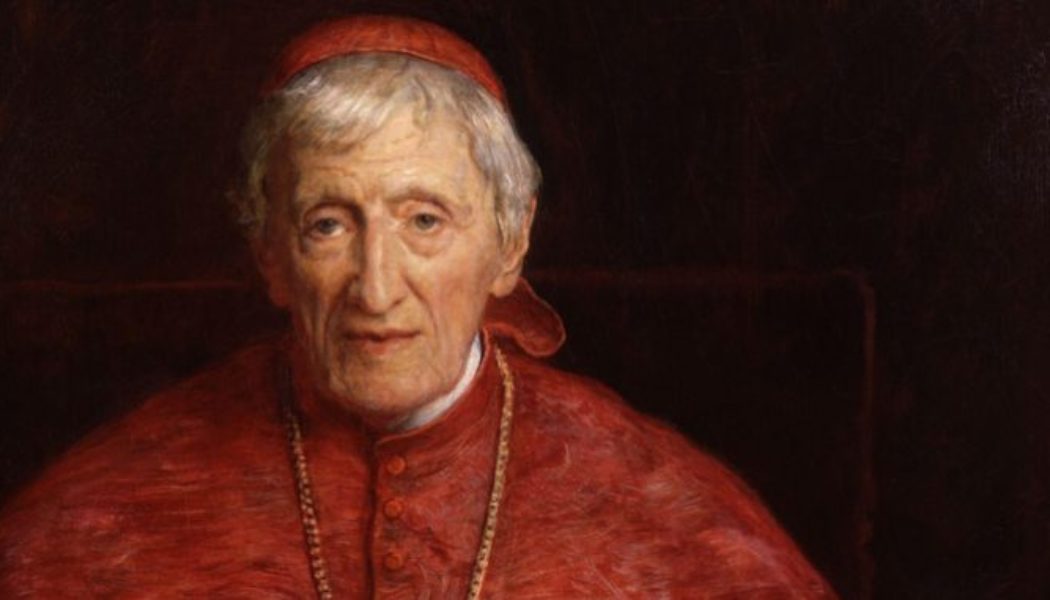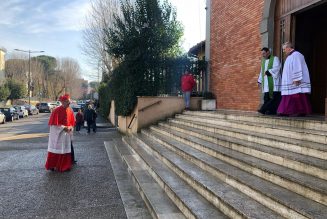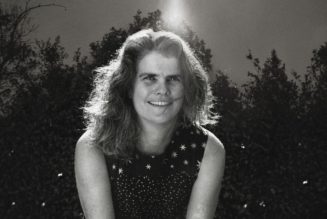
John Everett Millais [Wikipedia]
Presently, within the Catholic Church, there is much discussion concerning the development of doctrine. Traditionally, doctrinal development was understood to be an authentic growth in the Church’s understanding and articulation of what had always been believed and taught.
John Henry Cardinal Newman was one of the first to offer this understanding of authentic doctrinal development. Within the contemporary discussion on the nature of the development of doctrine, Newman’s teaching is often invoked. However, some theologians and a few bishops proffer, at times, the notion that what was previously considered binding in faith upon all members of the Church is no longer viable and justifiable. That the Church’s teaching needs to be altered given the sociological, philosophical, and theological changes that are now taking place within the Church and society. The doctrinal and moral changes that are deemed necessary are, nonetheless, asserted to be legitimate doctrinal and ethical developments, even though they may contradict what had been perennially taught. Because these changes are so revolutionary in nature, those who promote them speak of a “paradigm shift,” that is, a radically complete alteration of one set of beliefs to another.
Given this present misrepresentation over what constitutes true and authentic doctrinal and moral development, a distortion that causes confusion among the faithful, it would be beneficial to examine what Cardinal Newman teaches, and how and why it is extremely relevant in light of today’s contentious ecclesial milieu.
When considering the thought and writings of a great man, it is difficult to find a starting point, for his thought is commensurate with the man himself. John Henry Cardinal Newman is such a man. Thus, to understand Newman’s authoritative and seminal work, An Essay on the Development of Christian Doctrine, one needs to know, at least in part, his intellectual journey – a voyage that led him to the Catholic Church, of which his writing on the development of Christian doctrine was integrally instrumental.
Newman’s Life: The Development of his Character and Thought
Born in 1801, Newman was the eldest of six children. His early religious orientation was toward Calvinism and Fundamentalism. However, in 1816, during a five-month illness, Newman had what he later referred to as a conversion. During his convalescence, Newman, through reading and prayer, gained a profound awareness of God’s presence, as well as a love for the Fathers of the Church and the intellectual life. He also, at this time, developed an intense fear and abhorrence of Roman Catholicism and the papacy. All these character forming experiences are quite an achievement for a young man of 15.
Newman first studied at Oxford and then became a Fellow at Oriel College. He was also ordained an Anglican priest. Besides teaching, Newman was the select preacher at St. Mary the Virgin, the university church. Shortly after he returned from a trip to Europe, a bill for the disestablishment of the Church of England was introduced before Parliament. In this political and ecclesial context, Newman, Richard Hurrell Froude (1803–36), John Keble (1792–1866), and Edward Pusey (1800–82), took to writing Tracts for the Times, and in so doing initiated what came to be known as the Oxford Movement. Out of the eventual ninety tracts written, Newman wrote twenty-six, the most famous being the last – Tract 90.
During this period, though he tried to find a Via Media (a Middle Way) between liberal Protestantism within the Anglican Church and the corruptions of the medieval Catholic Church, Newman became more and more doubtful of the legitimacy of the Anglican Church. Nonetheless, he sought to find such legitimacy for his Via Media in the Fathers of the Church and the early Councils. He hoped to discover that what the early church held was the middle position between the various heresies confronted at the time, and if that was the case, the Church of England, by remaining true to antiquity, would be founded upon the solid rock of orthodoxy. However, the more he studied the theological history of the early church, the more Newman became haunted by a disquieting question. Why was Rome always on the correct side when it came to upholding the authentic doctrines of the Church? Slowly, the inevitable conclusion dawned upon him. The side was right because Rome was on it.
What further pushed Newman away from his Anglican heritage and toward the Catholic Church was the virulent, and often malicious, reaction to what he proposed in Tract 90. In this final Tract, Newman wanted to demonstrate that the Thirty-nine Articles of the Church of England, that is, the foundational doctrines upon which the faith of the Anglican Church stood, were directed at the corruptions within the Catholic Church at the time of the Reformation. Nonetheless, the Articles, Newman argued, were quite compatible to and reconcilable with the doctrines promulgated at the Council of Tent. Within this interpretation, Anglicanism was not a form of Protestantism, but was instead authentically Catholic in nature. However, theologians and bishops of the Protestant, liberal wing of the Church of England were furious. They not only disparaged and criticized Newman’s Catholic understanding of the Anglican Church, but they also pilloried and vilified him. In response to such outbursts of negativity, Newman sought refuge by retiring to Littlemore, a small village on the outskirts of Oxford. Before proceeding to what transpired there between 1841-1845, a few comments on the nature of doctrinal development that is presently taking place in the Catholic Church may be beneficial.
Newman was desperate to demonstrate that his beloved Church of England professed the same faith as that held by the church of antiquity and continued to be acknowledged throughout the proceeding centuries down to his own. By so demonstrating, Newman felt he could authenticate the historical and theological legitimacy of the Anglican Church. Whatever changes may have occurred over the course of the centuries, such modifications were authentic developments that were in accord with its ancient catholic lineage. While he wanted to testify to the theological and so ecclesial continuity between the Anglican Church of his day and that of the ancient past, what surprised Newman was that the liberal, progressive, Protestant element in the Anglican communion wanted to confirm the very opposite. Yes, they professed the ancient faith of the early church, yet they also believed that they had rightly rejected the heretical elements that had found their way into the Roman Church. Thus, their interpretation of the doctrinal and ecclesial development that took place over the centuries was one of discontinuity and not simply one of continuity.
Now presently within the Catholic Church, there are theologians, priests, and bishops who want to imitate what Protestantism and Anglicanism did in the past. They desire to change the doctrinal and moral teaching of the Church in a manner that would be discontinuous with the perennial theological, conciliar, and magisterial teaching of the Church. Moreover, like the liberal Protestants within the Anglican Church of Newman’s day, they do not see such changes as heretical, but as legitimate doctrinal and moral developments given the societal, philosophical, and theological currents of the present day. As the Protestant and Anglican reformations were not founded upon the renewal of what had always been believed, but upon the present cultural Zeitgeist of the time, so contemporary “Catholic reformers,” while giving a nod to the past, have fully embraced today’s cultural Zeitgeist, a spirit that is inimical to the gospel and the doctrinal and moral teaching that is contained within and developed from of it. These “reformers,” contrary to Newman’s expressed intentions, offer a theory whereby the development of doctrine is discontinuous, for only a proposal discontinuous with the past is a true development. If what was proposed was continuous with the past, it would not be a development but merely be the repetition of what was held previously. With this preliminary analysis and critique of the present discussion of the development of doctrine within the Catholic Church in the light of Newman’s thought, we can now examine what he proposed in his treatise: An Essay on the Development of Christian Doctrine.
Newman: On the Development of Christian Doctrine
When undertaking an investigation of Newman’s book on the development of doctrine, one must keep in mind that his treatise is historical in nature and not a philosophical opus nor even, in a sense, a theological work. By examining the church of antiquity, and noting the doctrinal development within that antiquity, only then could one devise a theory on the nature of doctrinal development. Moreover, one must also be aware that there are two editions of Newman’s essay. The first version, published in 1845 at the time of his conversion, and then, in 1878, a revised edition. (I will be quoting solely from the revised edition.) In the Introduction to his Essay, Newman wrote that his hypothesis
is to consider that the society of Christians which the Apostles left on earth were of that religion to which the Apostles had converted them; that the external continuity of name, profession, and communion, argues for a real continuity of doctrine; that as Christianity began by manifesting itself as of a certain shape and bearing to all mankind, therefore it went on so to manifest itself.
Thus, Newman believed that Christianity of his day was doctrinally the same as that of the early church. He did “admit that there are in fact certain variations in its teaching, which have to be explained,” nevertheless, he would attempt “to explain them to the exculpation of that teaching in point of unity, directness and consistency.”
Newman insisted that the issue of the variations that occurred in the Church’s teaching over the years, could not be solved by maintaining that there was a discontinuity from what was taught in the past. Such a view, Newman thought, would undermine the integrity of revealed truth itself. In this light, Newman argued that revealed truth itself demands doctrinal development:
The increase and expansion of the Christian Creed and ritual, and the variations which have attended the process in the case of individual writers and Churches, are the necessary attendants on any philosophy or polity which takes possession of the intellect and heart, and has had any wide or extended dominion; that, from the nature of the human mind, time is necessary for the full comprehension and perfection of great ideas; and the highest and most wonderful truths, though communicated to the world once for all by inspired teachers, could not be comprehended all at once by the recipients, but, through media which were human have required only the longer time and deeper thought for their full elucidation. This may be called the Theory of Development of Doctrine.
In this long and complex sentence, we perceive that Newman contends that truths, particularly revealed truths, as found in scripture and the Church’s tradition, cannot, by their very nature, immediately be fully comprehended. Only over the course of time, having been pondered and studied in various ways, is a fuller understanding obtained. This is an ever-growing intellectual process of both heart and mind. Thus, revealed truth is constantly developing in its doctrinal understanding. Truth itself does not change, but the Church’s further comprehension of its faith does, by necessity, advance.
The Need for an Infallible Authority
Having established the necessity of doctrinal development, Newman takes up the issue as to how one is to discern authentic doctrinal development from that false or unauthentic doctrinal development. Here, Newman, somewhat surprisingly, puts forth a foundational principle that will govern all other criteria for authenticating true doctrinal development. Although God’s revelation is found within scripture, yet its proper interpretation must be guaranteed through the course of time. Moreover, Christianity lives in a world of history, politics, ideologies, cultures, and philosophies, and yet revelation, and the salvation that it contains, must not be subsumed into any political or philosophical ideology. Who, then, is to protect scripture and the Church’s teaching from false interpretations, and who is to authenticate genuine doctrinal development? For Newman, there must be, a priori, an authority that can infallibly judge what is true and what is false development. With the above in mind, Newman maintains that a living magisterium, under divine direction, is thus seen to be imperative. To reject an infallible authority leads, inevitably, in the passage of time, to a break from unity. Such a break is observed in the case of Protestantism, or else the dogmatic principle is violated, as in Anglicanism, to the point of tolerating, within one and the same community, all kinds of contradictory opinions. Ultimately, then, belief, for Newman, is founded upon authority, first upon the authority of Jesus Christ as the head of the Church, and, subsequently then, upon the infallible authority of the Church, which Newman believes is found in the Roman Catholic Church. History bears out such a conclusion. Only in the Catholic Church does one find a continual authentic development coupled with infallible teaching.
However, Newman puts forward a hypothetical, though frightening, hypothesis. What if a council or a pope were to teach a doctrine that would contradict a previous council or pope? If such ever happened, Newman concludes that the notion of doctrinal development would be completely shattered, for who then would be able to judge what is authentically revealed and what is not? Newman’s alarming hypothesis is not so hypothetical today. Although the present pontiff himself has not overtly contradicted the traditional magisterial teaching regarding faith and morals, he has allowed others – regional and universal synods, priests, bishops, even cardinals – to propose teachings that blatantly contravene what the Church has perennially taught. At times, he has verbally expressed his disapproval, yet he has not taken any authoritative action against such false teaching. Rather, and more troubling, he has befriended and supported those who promote notions that are contrary to the faith. He has met with them whereby he encourages them and offers support for their dubious ministries, ministries that advocate homosexuality, transgenderism, contraception, and abortion. Moreover, those who disseminate teaching that is contrary to previous Church doctrine do so under the guise that such novel teaching is a development of doctrine. Newman would be appalled and scandalized at such pontifical behavior. As will shortly be seen, he will offer principles that make untenable such erroneous claims of doctrinal development.
Here I would offer a thesis that Newman did not consider. He presumed that all pontifical teaching or teaching from bishops concerning doctrine and morals is magisterial. I propose that any pontifical teaching or teaching from bishops that overtly and deliberately contradicts the perennial teaching of previous councils and pontiffs is not magisterial teaching, precisely because it does not fall within the past magisterial doctrinal teaching. The pope or a bishop may be, by necessity of his office, a member of the magisterium, but his teaching, if it contradicts the received previous magisterial teaching, is not magisterial. Such false teaching simply fails to meet the criteria necessary to be magisterial. It possesses no ecclesial authoritative credentials. Rather, it is simply an ambiguous or flawed statement that attempts or pretends to be magisterial when it is not.
Newman’s Seven Principles of Authentic Doctrinal Development
To judge the validity of a development, Newman compiled seven criteria or principles that must be present within all true doctrinal development. Such principles are extremely relevant given the present misuse of the notion of doctrinal development in today’s Church.
Preservation of Type
Newman’s first criteria is “preservation of type.” For Newman this preservation of type is readily suggested within nature itself. While an animal grows, such as a dog, it remains the same animal, dog, from beginning to end. Thus, for Newman, although doctrines may develop, their essential core truth remains the same throughout the developmental process. Those who view doctrinal development as the change from one belief to another violate this first criteria, as if a dog develops by becoming a cat.
Continuity of Principles
The second criteria inherent within the development of doctrine is quite complex. Newman terms it the “continuity of principles.” These principles are the interior driving forces that compel doctrinal development, and they find their source within the Incarnation. Newman lists ten:
1. The principle of dogma, that is, the revelation of supernatural truths.
2. The principle of faith, that is, an assent on the part of the person to the revealed truth.
3. The principle of theology or scientific study of revelation.
4. The sacramental principle which demands, because of the Incarnation, visible enactments of salvation throughout history.
5. The mystical sense of scripture, that is, scripture reveals more than what is apparent at first.
6. The principle of grace or the making of human beings into the likeness of Christ.
7. The principle of asceticism or the need for mortification and prayer.
8. The principle of the malignity of sin.
9. The principle that matter is capable of sanctification.
10. The principle of development, that is, that one’s understanding of revelation needs to grow.
Various heresies have denied one or other of these principles. For example, Luther and Calvin denied the sacramental nature of the church; the Manicheans denied the sanctification of matter; and the Modernist denies revealed truths.
Today, because of sociological, psychological, and philosophical advancements, there are those theologians, priests, and bishops who hold that past developments must give way to an entirely new set of doctrines, doctrines contrary to what have been previously held. They, therefore, would find Newman’s principles not to their liking, for the very purpose of these principles is ensure doctrinal continuity throughout the course of time. Such persons want to deny that there are dogmatic revealed truths to which the faithful must, for all time, give absolute assent. For example, within their perceived need for a paradigm shift, approval would now be given to new “doctrines,” and the purpose of theology would be to ascertain what those new doctrines and moral norms would be, ones that would now be discovered in an innovative interpretation of scripture. Moreover, then, given the radical transformation of culture, sins that were considered to be mortal or deadly, many of which are sexual in nature, would now be thought to advance holiness – if done in love. Such an understanding is gnostic in nature. The body is not seen as constitutive of who one is, one’s identity. Rather, one “uses” one’s body to become the person one is authentically meant to be – such as a sodomite, a fornicator, an adulterer, or a transgendered person. Thus, what it means to grow into the grace-filled likeness of Christ radically changes. What was previously considered a sinful distortion of one’s likeness to Christ now becomes an exemplary and appropriate configuration into his image. Although the above may strike the Catholic faithful, clerical and lay alike, as bizarre, those who promote such a revolutionary change in doctrinal development, and so a radical rejection of Newman’s principles for an authentic development of doctrine, are convinced that their agenda is the cutting-edge of the Church’s future. Again, those Catholics who reject such a futuristic agenda are ridiculed as rigid and backward-looking.
The Power to Assimilate
Newman’s third criteria for ascertaining a proper development of Christian doctrine is that of the power of assimilation. After vigorously arguing against what cannot be assimilated into doctrinal development without undermining the doctrine itself, it may, at first, seem odd that Newman should now assert that assimilation is necessary for the development of doctrine. For Newman, as nature, such as a tree, assimilates elements that are foreign to it in order to grow, such as water and minerals, so the Church and her doctrines assimilate elements that are, at first, foreign. For example, the Church assimilates the various customs of peoples throughout the world, or integrates different truths found within diverse philosophies, or accommodates diverse forms of governments depending upon where it exists. Importantly, amid these numerous assimilations, the Church does not lose its identity nor do its doctrines change by such accommodations. Rather, by being amenable, but discerning, to the environment in which it finds itself, the hurch more easily embeds itself and its doctrines within all cultural and political milieus and among all peoples. For Newman, what cannot happen is that the culture of various peoples or the polity of a particular nation absorbs the Church, and in so doing undermines the integrity of its doctrine. This was a live issue for Newman, for this is exactly what took place in England. The Catholic Church became the Church of England, and thus came under the authority of the government of England.
Today, in most democratic countries where there is a proper separation of church and state and the freedom of religion, the Church can maintain its integral identity and sustain its doctrinal truths. However, those who wish to change the Church’s teaching, in the name of doctrinal development, often elicit support from the respective government. They do so because they recognize that such support will not come from within the Church itself. Heretics in the past have often engaged in this kind of subversive behavior. Arius and the Arians of the fourth century enjoined the emperor to persecute those bishops and priests who upheld the creed of the Council of Nicaea. Similarly, Lutheranism became the state religion in parts of Germany and Calvinism became the civic religion of Geneva. Similarly, today, there are those who encourage the government, often surreptitiously, to enact laws that would attempt to force the Church to change its teaching, for example, forcing Catholic hospitals to perform abortions or vasectomies, or make available contraceptives. Likewise, in the name of gender equality, they urge governments to enact laws that would coerce the Church to sacramentally ordain women, lest it run afoul of the law. This soft form of persecution may be worrisome, yet the Church cannot reconcile itself with the present culture in the hope of achieving a peaceful coexistence. To do so would be to abandon its doctrine.
Logical Sequence
The fourth criterion for determining a proper development of Christian doctrine is that of logical sequence. By logical sequence, Newman does not mean a sequence that can be deductively reasoned in a syllogistic manner. Rather, upon perceiving the result of a process, one grasps that it logically flows from what preceded it. Newman gives the example of Jesus’ divinity. From the biblical evidence, one cannot syllogistically conclude that Jesus is God, yet considering all that is proclaimed concerning him in the New Testament, it is logical to conclude that he is indeed the Father’s divine Son. Two further examples may illustrate this principle, those concerning the doctrine of Mary’s Immaculate Conception and her Assumption, body and soul, into heaven, neither of which are explicitly declared in scripture. Yet, over the centuries, devotion to Mary progressed such that, because she is the Mother of God, it is right and proper to believe that she was conceived without sin and assumed gloriously into heaven. There is an inherent logic to this historical doctrinal development, though one that cannot be reduced to a syllogism. This criterion is important as a response to those who propose as doctrines teachings that have no historical anticipatory warranty, such as women priests or sexual acts that have traditionally been declared sinful. These proposals do not logically flow any preceding historical evidence.
Anticipation of the Future
Newman gives as his fifth criteria that of anticipation of the future. This criterion is similar to the preceding one – that of logically flowing from what was previously held, and so anticipated in the future. Nonetheless, Newman here wants to accentuate what scripture, the Church Fathers, or the thought of previous theologians taught. Also, this doctrinal development may have also laid hidden within earlier dogmatic declarations. For example, within the Latin western tradition, the Son is declared to be begotten of the Father, and that the Father loves the Son in the love of the Holy Spirit and the Son loves of the Father in the same love of the Spirit. Therefore, in accordance with Augustine, Thomas Aquinas, and the subsequent tradition, the Holy Spirit is doctrinally declared to proceed from the Father and the Son. Thus, what was initially believed was the theological impetus to what came to be held at a future time. What is observed here is that what doctrinally developed in the past finds in fulfillment in what was doctrinally developed in the future, thus mutually confirming the doctrinal authenticity of both.
Conservative Action Upon the Past
The preceding two criteria lead Newman to his sixth criterion – conservative action upon the past. For Newman, because previous doctrinal developments have been authenticated, they cannot be judged at a future time to be erroneous or corrupt. This criterion is particularly relevant to the present ecclesial situation. Those who propose radical doctrinal changes, changes that are not in accord with previous developments, cannot possibly be true, for they would contravene the truth of previously held doctrines. For Newman, the development of Christian doctrine means that what was doctrinally believed previously is clarified and advanced. Doctrinal development is not the radical shift of believing something entirely different. Thus, Newman would be adamantly opposed to the contemporary notion of a doctrinal paradigm shift wherein there is no doctrinal rapport between the past and the present. Such an understanding simply eradicates the previous doctrines and their development. Ultimately, such a paradigm shift gives way to relativism wherein enduring truth ceases to exist. What one embraces, as noted before, is merely the contemporary Zeitgeist, and as the saying goes, “He who marries the Zeitgeist of today quickly becomes a widow.” Thus, bishops, cardinals, priests, and theologians who have espoused today’s fads need to seriously rethink their positions lest they soon be mocked and ridiculed for being intransigent, retrograde rigorists. However, doctrinal truth and its authentic development are always relevant. They never go out of vogue, as Newman well knew.
Chronic Vigor
The above principle leads to Newman’s seventh and last criteria – that of chronic vigor. Newman rightly perceives that heresies are short lived in that they solve the mystery contained in the doctrine. For example, Arius, to preserve the oneness of God, denied that the Son was truly God, but rather the highest creature. In so doing, he preserved the oneness of God, but abolished the mystery of the Trinity. Nothing more could be developed – all that could be known has now been determined. However, the Council of Nicaea, in declaring that the Son of God was consubstantial with the Father, the mystery of the Trinity was not only preserved, but it also allowed for future developments in understanding the nature of the Trinity – the mystery contained, in accordance with Newman’s principle, its chronic vigor. This vigor is also found in Aquinas’s teaching that the persons of the Trinity are subsistent relations, that is, they subsist or exist as who they are only in relation to one another. The Father subsists as Father in relation to the Son and Holy Spirit. The Son subsists as Son in relation to the Father and the Holy Spirit. And the Holy Spirit subsists as the Holy Spirit in relation to the Father and the Son. Thus, what must be grasped here is that the development of doctrine is not the solving of a theological problem or conundrum. Rather doctrinal development consists of the further elucidating of a mystery so as to grasp more clearly the nature of the mystery. The mystery may be more clearly perceived but it continues to be an incomprehensible mystery. One knows more fully what the mystery is, but the mystery itself remains incomprehensible. By remaining incomprehensible, the mystery continues to possess its chronic vigor – its openness for a deeper developmental understanding.
Again, given today’s ecclesial milieu, those synods, bishops, priests, and theologians, in proposing novel doctrines that articulate teachings contrary to the ancient mysteries of faith, fall into a twofold interrelated error. First, they fail to recognize the enduring developmental vigor that resides in the mysteries they wish to replace. Second, what they recommend as replacements cease to be life-giving, for they do not contain the truth of the life-giving gospel. For example, some propose that those who were sacramentally married and yet presently divorced are permitted, upon remarrying, to receive the Eucharist may appear to be a merciful solution that resolves a sad situation, and, in so doing, be rightly termed a development of doctrine. However, this supposed solution terminates the indissoluble sacramental nature of marriage. Moreover, it undermines the sanctity of the Eucharist, that is, one who is objectively in the state of mortal sin, and, thus not in living communion with Christ and his Church, nonetheless, is permitted to receive communion. This flaunts the truth that to receive Jesus in holy communion one must be in communion with him and with his body, the Church. The partaking of the Eucharist becomes an enacted lie. One appears to be in living communion with the Church, when, in fact, one is not. Thus, this seeming pastoral solution is not a doctrinal development, but one that condones sin, violates the sacrament of marriage, and abuses the sanctity of the Eucharist.
Conclusion
This essay has attempted to offer, in the light of John Henry Cardinal Newman’s teaching, an authentic and proper understanding of the nature of the development of doctrine. Simultaneously, it has endeavored to critique contemporary erroneous notions of doctrinal development, especially those proposed by some bishops, priests, and theologians within today’s church. Such false proposals may sow confusion among the faithful, clergy and laity alike, yet those faithful, who are knowledgeable and confident in their faith, will not be misled or deceived. They will instinctively, because of their faith, know what is true doctrinal development and what is false, for the Spirit of truth resides in their hearts and minds. Moreover, they have the assurance, as the convert-Newman knew well, that Jesus will never abandon his infallible church – the ultimate judge of Christian doctrine and its development.
If you value the news and views Catholic World Report provides, please consider donating to support our efforts. Your contribution will help us continue to make CWR available to all readers worldwide for free, without a subscription. Thank you for your generosity!
Click here for more information on donating to CWR. Click here to sign up for our newsletter.








